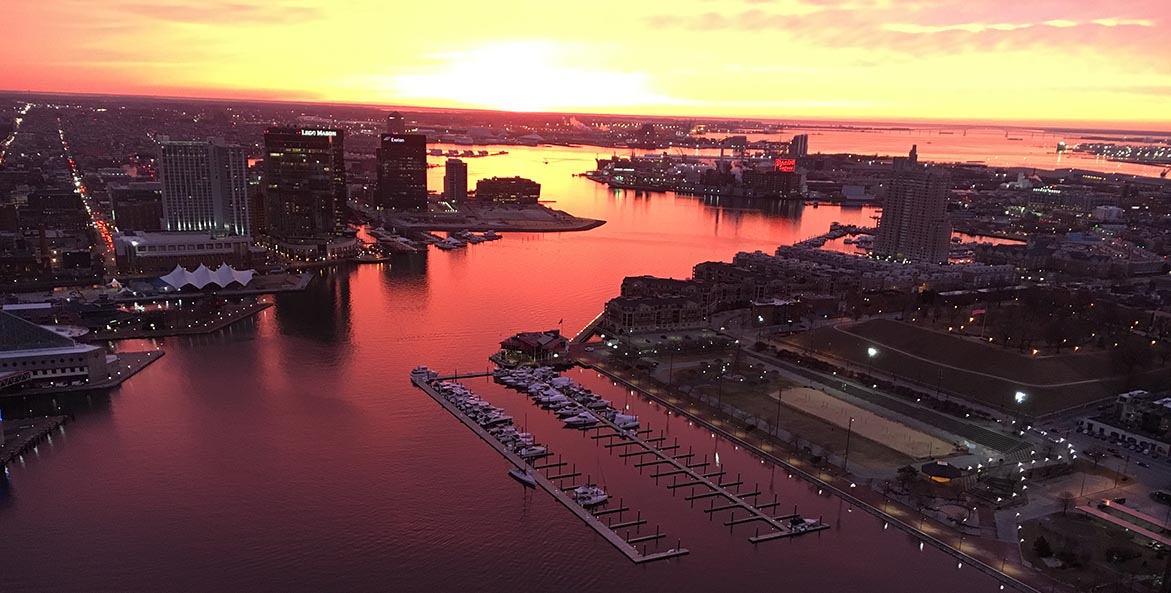Inequality and segregation have long plagued Baltimore City and transit has been a sore point in the conversation. The original Red Line—a proposed 14-mile east-west transit line—would have connected the West and East Baltimore regions, making travel in the heavily congested corridor simpler, faster, and cheaper.
Community members and officials worked for over a decade to plan and assess the environmental and financial impacts of the Red Line, as well as secure almost one billion dollars in federal funding. The plan centered around transit-oriented development, which would have brought economic and health benefits to the region. The cancellation of the project in 2015 was viewed as unjust, frustrating, and deeply hurtful to many members of the communities impacted by this decision.
"Residents who participated in the Red Line planning, community outreach, and Station Area Advisory Committees over the thirteen-years of preparation to construct the light rail line, felt 'betrayed' by the Governor’s decision to cancel the project," says Samuel Jordan, President of Baltimore Transit Equity Coalition (BTEC).
Jordan related reactions from several active Edmonson Avenue Red Line station area volunteers:
“He never understood the work that goes into a project like this.”
“Just when you are glad that something we need is about to work, white folks pull the plug,” and
“I was sick to my stomach when I heard that the Red Line was cancelled. We had gone all the way out to Portland and now we have nothing.”
The East-West Corridor Study
The state is now on the hunt for a replacement. This year, the Maryland Department of Transportation (MDOT) Maryland Transit Administration (MTA) advanced the East-West Corridor Study, which identified a range of options (known as Alternatives) that would serve existing and future transit demands. The study includes seven Alternatives ranging from bus lines to heavy rail lines to light rail lines. The state resuming planning efforts for transit in this corridor is a positive step. But none of these alternatives fully live up to the originally proposed Red Line.
"The East-West Corridor Study largely bypasses the tremendous amount of work that residents and officials put into the Red Line," says CBF’s Maryland Executive Director Josh Kurtz. "By failing to include a demonstrably buildable option and seeking community feedback only on alternatives that the community stated it did not want, MTA is shortchanging the study and local residents. Advancing a study without the Red Line included is less than what community members asked for and deserve."
Developing transit plans is often complicated, but worthwhile to both the community and the environment. Public transit reduces pollution that would otherwise damage our health, our climate, and our waterways. Automobiles emit particulates that can cause or worsen asthma and other diseases. Chemical compounds such as nitrous oxides are also deposited into waterways, degrading water quality. Baltimore’s East-West Corridor, which includes a number of lower income and minority-majority neighborhoods, is faced with intense levels of pollutants due in part to the concentration of auto travel and lack of cleaner transportation options. Meanwhile, residents can struggle with the high cost of owning and maintaining a personal vehicle. As a result, these communities end up burdened with the environmental impact of regional travel patterns without an equitable level of access to workplaces, grocery stores, schools, and natural areas.
Although CBF is largely supportive of public transportation options, not all options are equal in value and benefits, or appropriate in all areas. Providing accessible and affordable rail transit in this corridor would help reduce auto dependence and its associated pollution burden. Fixed-rail systems like the City’s Metro and light rail services represent a more lasting commitment to clean and equitable transportation access than buses, enabling residents to live healthier lives and businesses to invest in their communities with confidence.
CBF believes that the best use of resources is to revive the discussion and implementation on the Red Line. Revisiting the Red Line’s environmental impact study with the U.S. Department of Transportation is the best next step, as this plan was approved with significant community feedback and scored highly enough to secure federal funding. Otherwise, in the alternatives provided in the East-West Corridor Study, we believe Alternative #6 most closely resembles the community’s requests for the Red Line. This investment in a more equitable transportation system will help secure community health, wealth, and clean water for generations to come.
Read CBF’s full comment letter here.
Other Options
Organizations like BTEC have been advocating for equal access to transit for all riders across the Baltimore region. The current transportation system is in need of an overhaul to provide residents with better access to jobs, education, healthcare services and more. In collaboration with Johns Hopkins University, BTEC produced Baltimore’s first transit equity analysis in 2021 to examine the extent of the problem.
Additionally, BTEC is looking to create a regional governance system—a Baltimore Regional Transportation Authority (BRTA). The system would give Baltimore residents more say in choosing the transportation projects that work for them.
"Governor Hogan’s transportation budget allows 70 percent of the total to be dedicated to the State Highway Administration," says Jordan. "Only 2 percent is budgeted for the MTA, the signal that state funds would be readily available for roads and highway while transit modes including buses, light rail, subways, and commuter rail would continue to suffer high rates of disrepair, unreliability, and long commute times."
What’s Next
The MTA intends to narrow the number of alternatives based on public feedback, and select a preferred option after more detailed review. Keep up to date with the project here.



